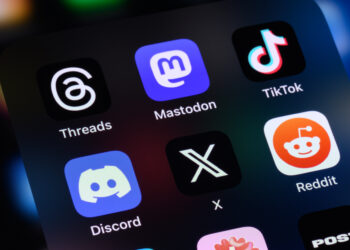
Participants in the world of scholarly communications may not be familiar with Nate Hoffelder, whose site, The Digital Reader, is one of the most consistently useful places to go when you are trying to keep up on e-book developments. Hoffelder focuses almost exclusively on the consumer book area (though I did see a couple citations to the Scholarly Kitchen, which demonstrates both taste and judgment), so those concerned with SCOAP, the HathiTrust, and impact factors are likely to be grazing elsewhere. It’s a shame — and a mistake — as the e-book is evolving not in libraries or among STM publishers but at a small number of giant consumer tech companies and, with greater angst, at the trade book publishing companies. Journals as well will soon be swept into the orbits of these large entities since digital media are no respecter of traditional formats.
I was pondering “the consumer connection” when I happened on one of Hoffelder’s latest posts. Hoffelder notes, in his words, that “e-books used to be a pain in the ass,” but that is no longer the case since the launch of the Kindle and the huge competing e-book ecosystems that have grown up in the past five years. When e-books were a pain, they played a useful role in book promotion: they could be made available in open access form, enticing readers to take a a look; these readers were then encouraged to purchase a more convenient edition, which at the time meant print. Print is still convenient, of course, when you can find it, but e-books keep getting better and better. So many people are now simply turned off by the clumsy free e-books they see online or those e-books have been refashioned to be easy to use. A refashioned and easy-to-read e-book that also happens to be free is a market-killer. Publishers don’t need even more market-killers, thank you, so using e-books to promote the sale of print has diminishing value.
I have written about this before, beginning way back in 2007, and it is heartening to see that things are evolving as I anticipated. The mistake people made in the past and continue to make, especially in scholarly publishing, is to think that an e-text will only be used for discovery and preservation and that the acts of reading and annotating will forever be the province of tried and true print. This argument is then used to support open access services, which over time surprise their managers when the sales of print-on-demand (POD) copies disappears. But why be surprised? Why not think ahead?
The occasion of Hoffelder’s essay was the recent decision by science fiction publisher Baen Books to cut back on their free online editiions. There are many reasons for this, but at the core is the fact that free books are no longer a good way to sell print. Baen was a pioneer of this practice, which for a time attracted a number of evangelicals of the free content movement. The era of free has not yet come to an end, but it can be sensed on the horizon, not unlike how one’s mind can turn to darker thoughts with the first chill of autumn. The author-pays Gold OA model, which is decidedly not free, represents a next stage in the economics of publishing, which is on the road to direct-to-consumer subscriptions of aggregations.
As Baen goes, so will other services founded on hope and prayer, as in the end, that which is not sustainable cannot be sustained.
Discussion
2 Thoughts on "Twilight of the Promotional E-book"
Not sure how this applies to the “open access” projects at places like the National Academies Press and Penn State where, while books are available for free use online, they cannot be downloaded as full e-books, so still maintain incentives for people to buy them in POD editions. Are you suggesting that print sales will dry up for these kinds of books also? If so, the evidence doesn’t support that conclusion yet.
Open access does not drive print sales – at least that’s our experience. We’ve been giving free read-only online access for years (since 1999!) and selling print and copy/paste/print-enabled e-books in parallel. We never believed giving free read-only access would increase print sales and we were right. Our print sales carried on falling steadily until the last couple of years when they seemed to have stablised at a level about 1/3rd of where they were in 2000, which is too low to be our only source of income. Our strategy was (is) to use the free read-only versions to help new readers find our content and with more readers the money would come via our fully-functional e-editions. It’s worked for us, our readership has grown in leaps and bounds – twenty-fold up from 2000 – and the money has come, via a subscription service to our e-books (bundled with our other content) rather than individual e-book sales. Our subscription service is ‘all-you-can-eat’ so no restrictions on downloads or multiple users and, thanks to a new platform, we’re seeing downloads grow fast, so far this year they’re 40% up on 2011. Would this strategy have worked if we had depended on sales to individual readers rather than to libraries? Somehow, I rather doubt it.



